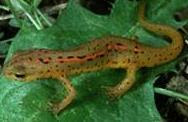Pictures of Fishes

. Great White Shark The great white shark, largest of the strictly carnivorous sharks, is found in tropical and temperate oceans and seas worldwide. Great white sharks use hearing, smell, sight, taste, touch, and electrical perception to locate food. Hammerhead Shark The hammerhead shark, distinguished by the lateral expansion of the head into a hammer-shaped structure, is perhaps the most easily recognized shark. The great hammerhead roams tropical and subtropical seas feeding on stingrays, bony fish, and invertebrates. In this photo the hammerhead’s eye is visible at the tip of the hammer-shaped head structure. Hi-Hat Drumfish This drumfish’s vivid black and white stripes, while popular with aquarium owners, do little to attract other drumfish. Instead, potential mates swimming out of visible range detect the fish’s far-reaching “knocking” and “drumming” noises, vibrations produced by tightening the muscles of the swim bladder. This tropical Atlantic species gets its name from its ta...




